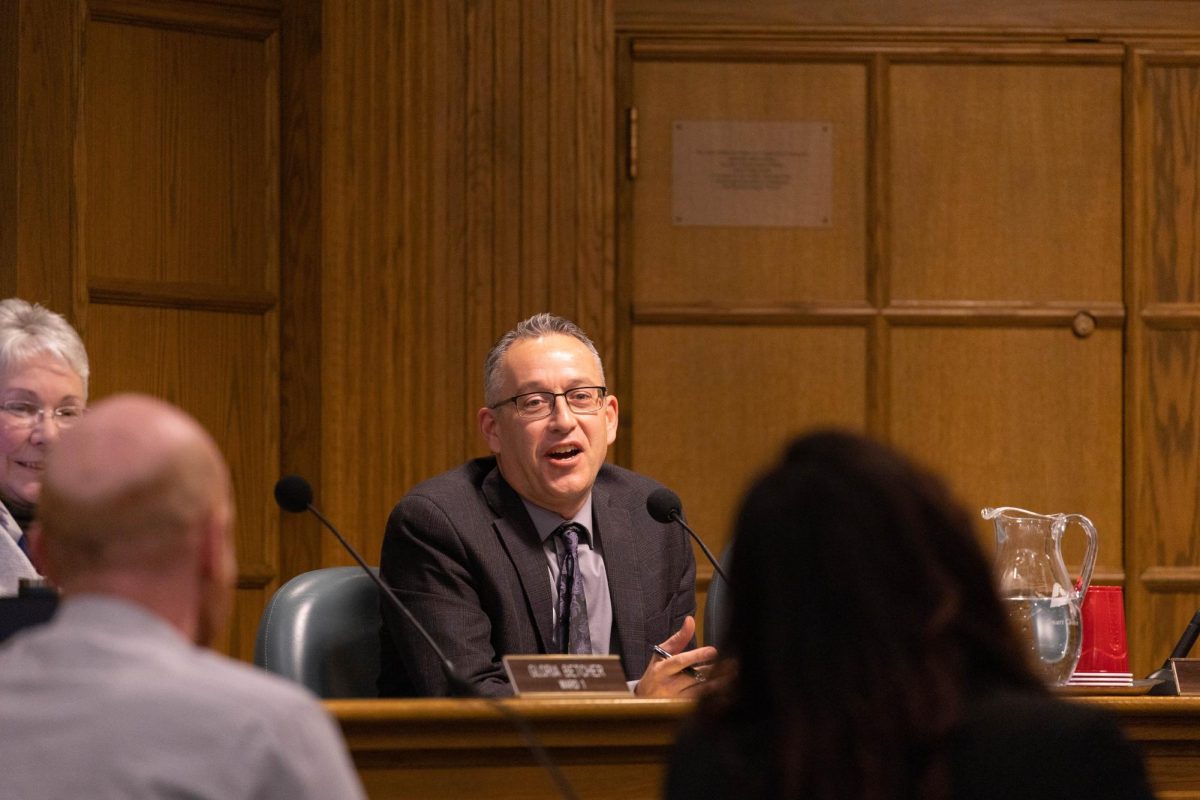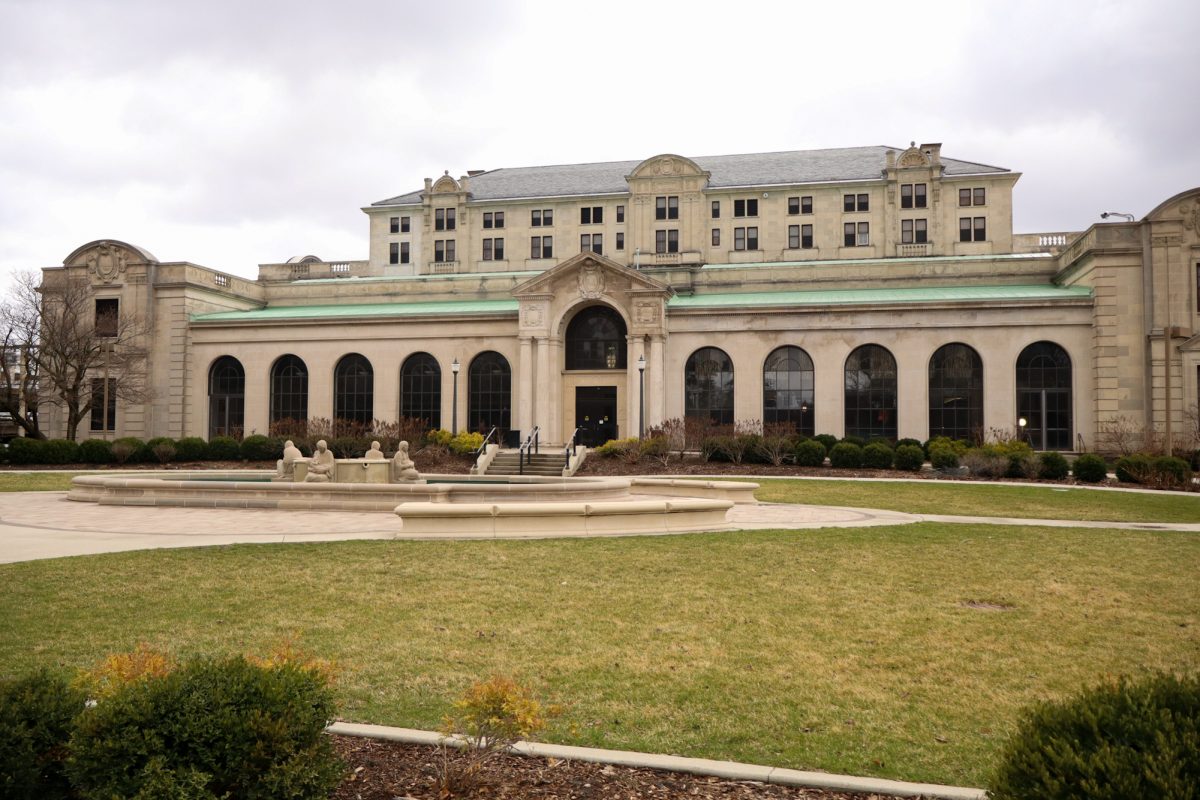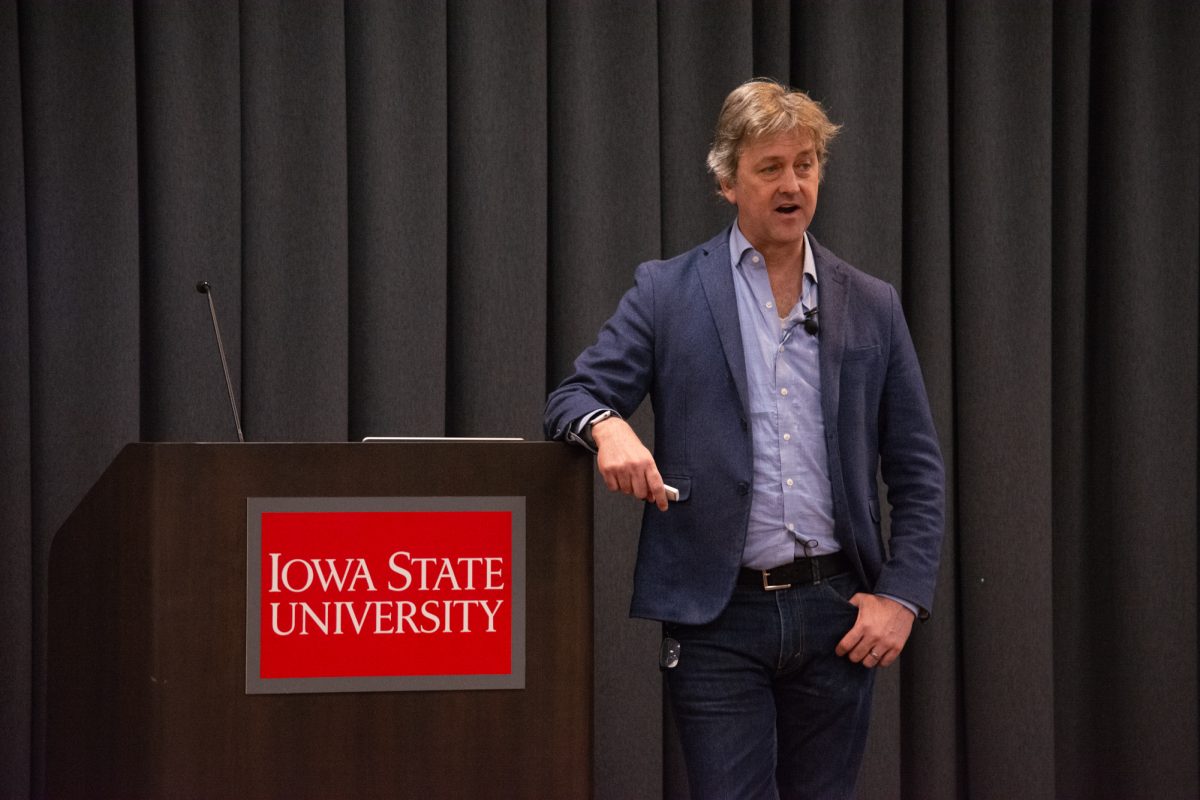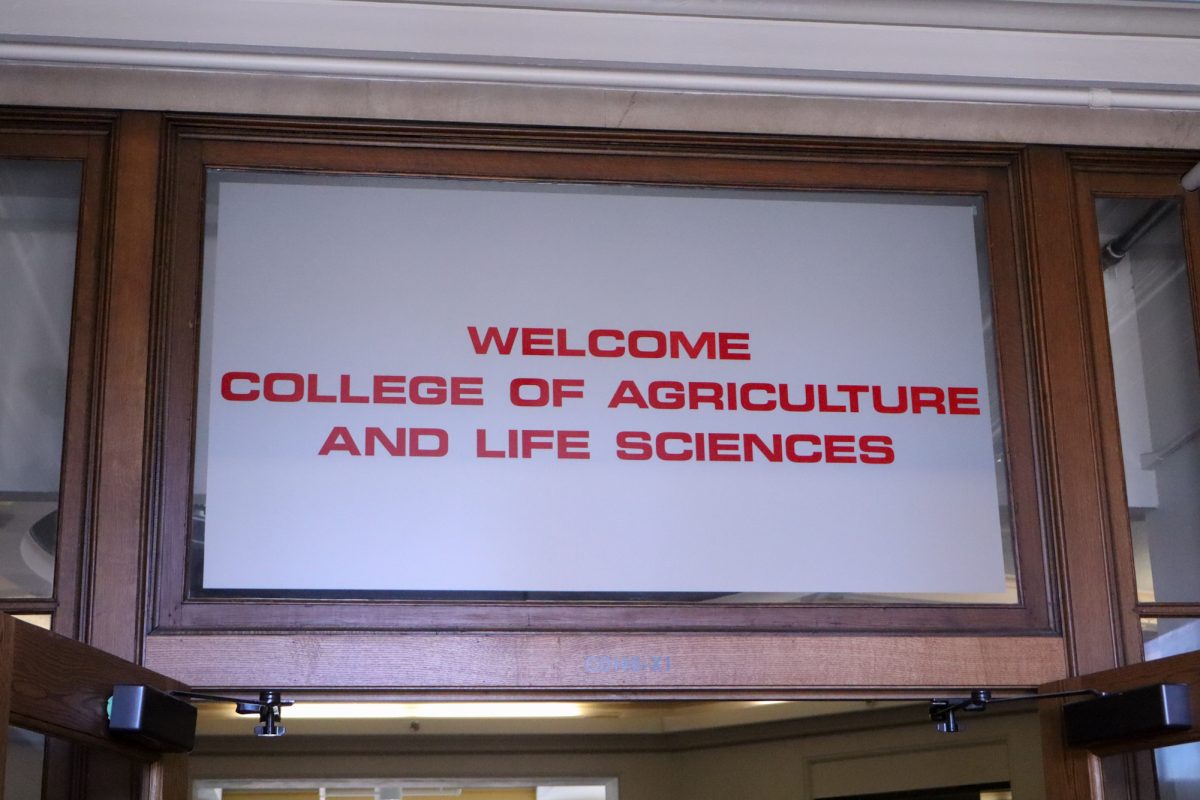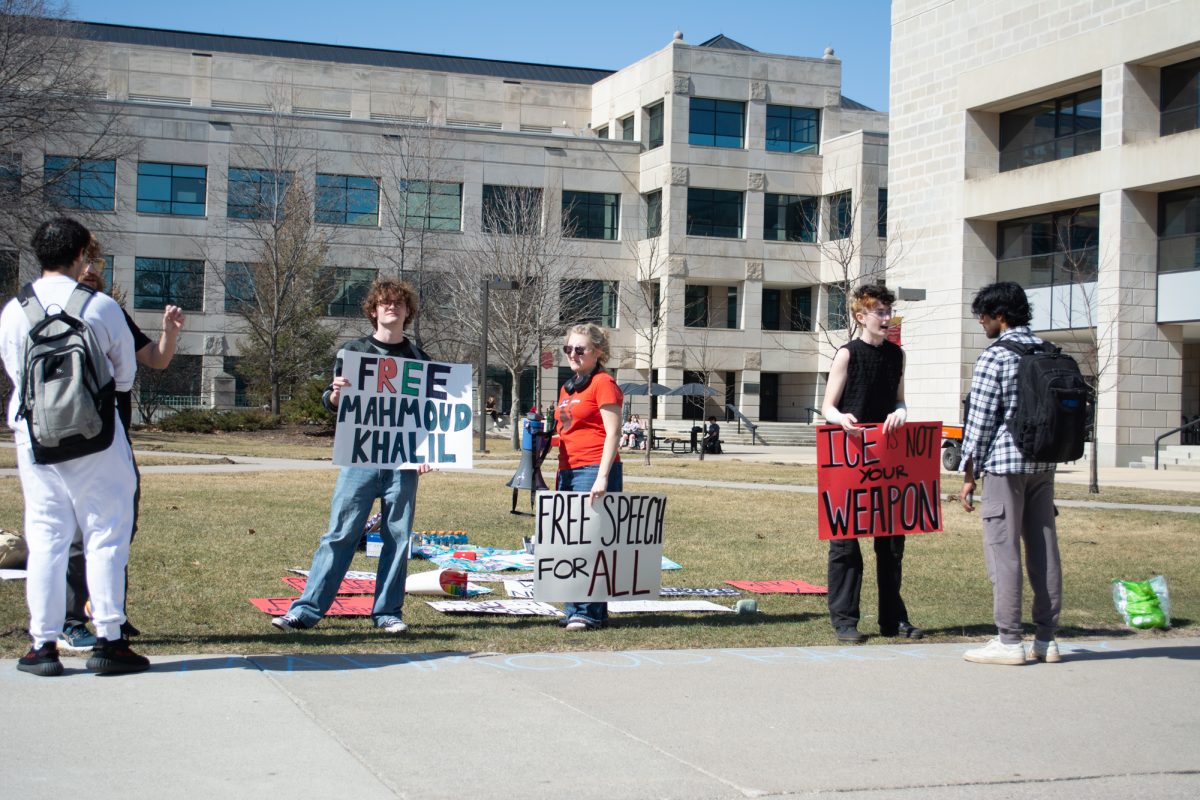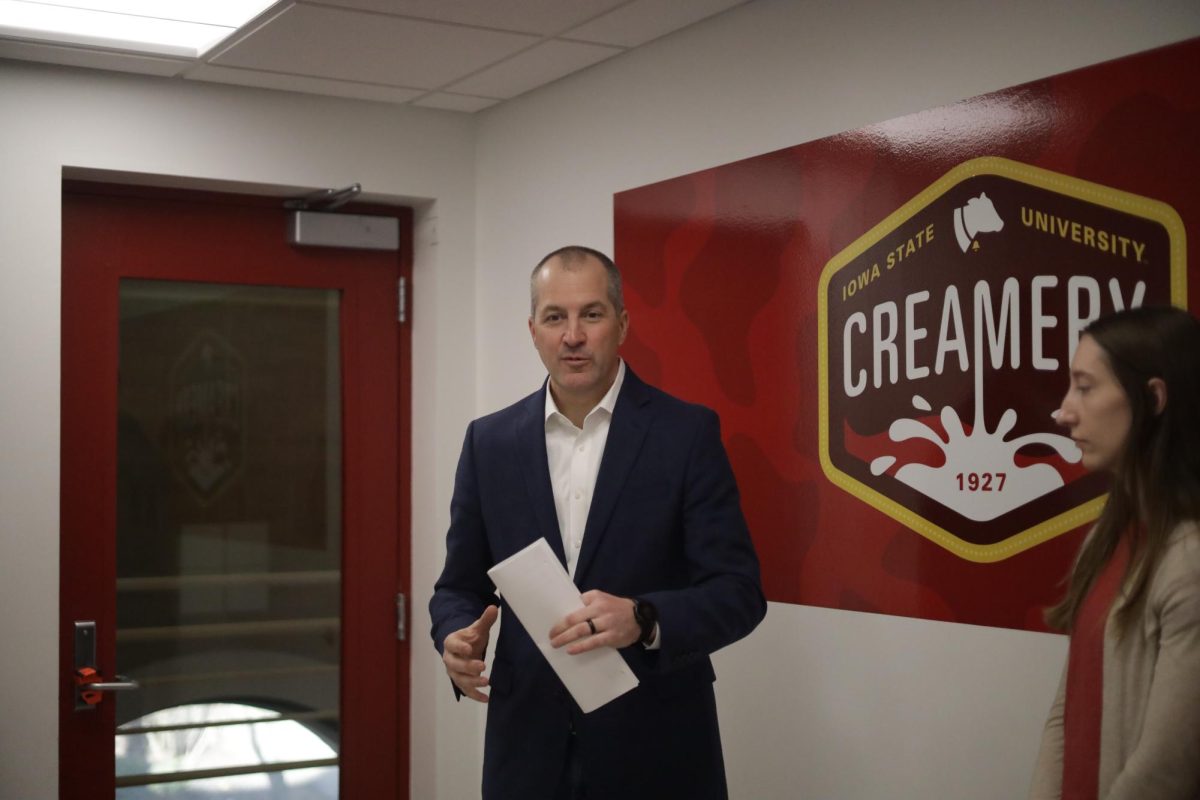Ames city staff presented seven initial action steps toward implementing the city’s Climate Action Plan to the council Tuesday, based on the plan’s foundational “six big moves” which are the end goals of the plan that the city must now decide how and if they want to achieve them.
Mayor John Haila concluded the discussion by saying that taking no action meant Ames city staff would continue as they had been.
“Remember, the six [big] moves were recommended by the consultants and we’re showing you options to help implement them,” Ames City Manager Steve Schainker told the council Tuesday. “You have to make the policy decision, which, if any, of these seven initial steps you want to make.”
According to city documents, some of the seven action steps can be achieved in several ways, each having its own benefits and consequences.
Step 1: Increase wind and solar generation
Ames Electric Director Don Kom said the city is looking into solar projects within city limits, utility-sized wind projects and customer-owned rooftop solar to accomplish meeting Ames’ energy requirements.
“That’s what we’re planning for in the months, years and decades to come is how do we transition from how we’re producing power today to a more green, sustainable fuel source,” Kom said.
Kom said the utility-size projects would be located outside of Ames which means the Midcontinent Independent System Operator (MISO) would serve as a “wire” that would get the energy to Ames.
“I can envision a situation where, let’s say we build wind in Carroll County, and MISO will come back and say ‘Your wind, Ames, is overloading facilities in Des Moines. So you need to make a $3 million investment in Des Moines so that your project covers its impacts on the greater grid,’” Kom said.
Step 2: Reducing waste emissions
Ames Electric Services has already begun a pilot project to increase cardboard recycling. Additionally, due to a 30% contract cost increase at the power plant, natural gas purchases for 2024 will decrease by 15% to offset costs. Consequently, resource-derived fuel will also be decreased, and more solid waste will need to be diverted.
Assistant City Manager Brian Phillips said solid waste hauling from Ames to Boone has seen “a significant increase” since around 2017 and that the current agreement to haul solid waste from the resource recovery system to the Boone County Landfill expires in June of 2025.
“That’s a real significant pressure point for them,” Phillips said. “That landfill has a finite amount of airspace, right? That’s what landfills are in the business of selling, they’re selling airspace.”
“From a planning perspective, June of 2025 is tomorrow,” Ward 2 Rep. Tim Gartin said.
Phillips said there are alternative solid waste areas with capacity and “it’s just a matter of working out the details.”
Step 3: Net zero and net zero-ready construction
Ames City Planner Kelly Diekmann said this step is attempting to reduce the city’s carbon footprint in residential and nonresidential construction beginning in 2025 and scaling up in the future.
“To see new construction really looked at as a net-zero, meaning that the amount of energy that is consumed on-site by the occupants of the building, is equal to what is generated on the site,” Diekmann said.
Diekmann also said that net-zero ready is a facility that could be net-zero if renewable energy was installed at some point in the future.
City documents state that the city could create an optional special district or utilize the annexation and rezoning authority to “set expectations for future development.” Diekmann said Iowa law prohibits establishing requirements in a local building code that exceed the state building code and additionally a city cannot directly restrict the use of natural gas.
Gartin said the Legislature has signaled they want to limit the ability of municipal governments to alter the building code and wants to “proceed with great caution.”
“My observation is that if the legislature sees this as an end around, this will be a very short exercise,” Gartin said. “When we were discussing this before, I thought we were looking at trying to find ways to incentivize, I would be very supportive of looking at ways to use tax abatement and other sort of carrots as a way of achieving these goals.”
Diekmann said in terms of development agreements, he would “be really shocked” if they “undid” the city’s ability to use it instead of the building code and said the zoning elements would be more at risk of being limited by the legislature.
Gartin said the number one issue facing Ames is a lack of housing and additional costs of development are “counterintuitive to our goal of building affordable housing.”
“I liked the idea, where possible, of using carrots instead of sticks, making things voluntary instead of mandatory. We don’t yet know what the price tag of these design elements will be,” Gartin said. “[Ames’ climate plan consultant] created a very rosy scenario, that if developers only knew the benefits of this, then everybody will do this. I think that’s nonsense.”
Step 4: Retrofit existing buildings
The council was offered several options to achieve this step including permit incentives, smart energy incentives, partnering with Mid-Iowa Community Action on weatherization and a community-wide “pay as you serve” program.
“Another idea of looking at the entire community as a way to benefit all homeowners would be Ames Electric Services, would offer comprehensive energy audits, including a carbon reduction roadmap for customers,” Ames Public Relations Officer Susan Gwiasda said. “The city would borrow funds from the Green Bank, at a very, very low or no cost interest and that aims electric services customers would be offered our low-interest loans that would be financed through their utility bill.”
Step 5: Retrofit municipal buildings
Ames has been accepted into the Evaluating and Prioritizing Municipal Buildings for Energy Efficiency and Decarbonization Investment program according to city documents. An energy audit will be conducted of municipal buildings and the “information will be used to set a plan and timeline for retrofitting municipal buildings.”
Step 6: Electrify municipal fleet
Due to availability, the city may opt to purchase hybrid vehicles and in cases where none are available, bio and alternative fuel-sourced vehicles will be considered.
Notably, this project excludes CyRide, though the transit organization has committed to purchasing 17 electric buses by 2050.
Step 7: Create a mayor’s climate action plan leadership taskforce
The task force could aim to “work together to reduce our community carbon footprint” according to city documents.
Additional measures
Haila proclaimed January as Slavery and Human Trafficking Prevention month. The National Human Trafficking Hotline can be reached at 888-373-7888 at any time and is available in over 200 languages according to their website. Those in immediate danger should call 911.


